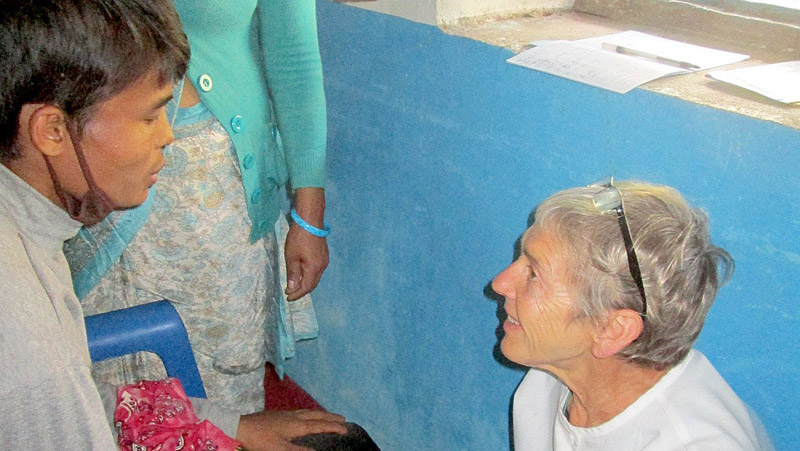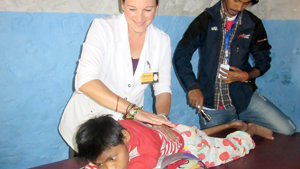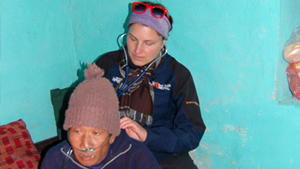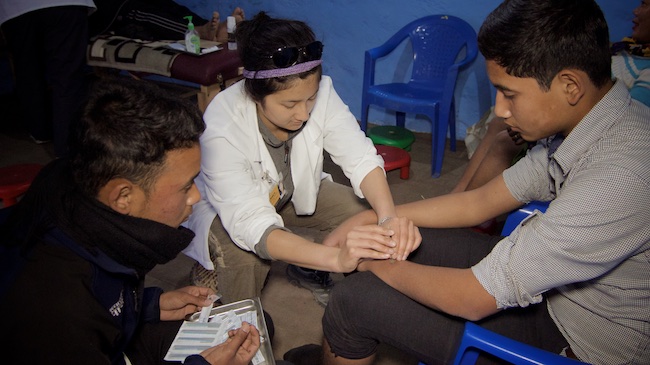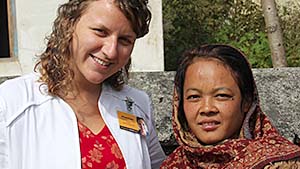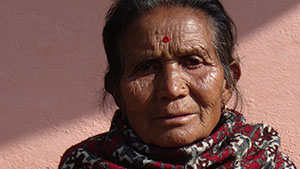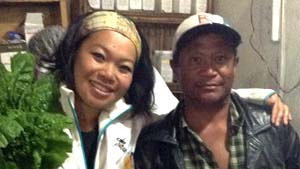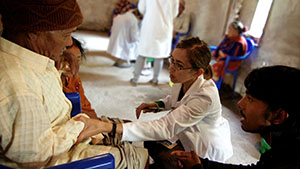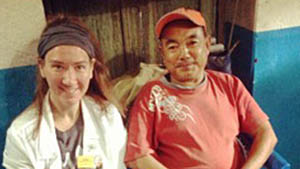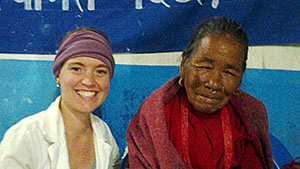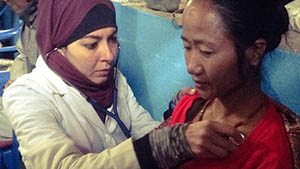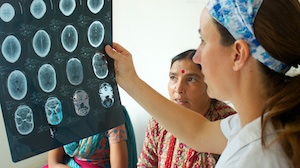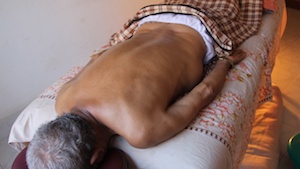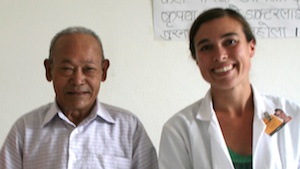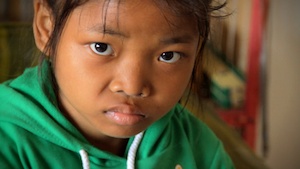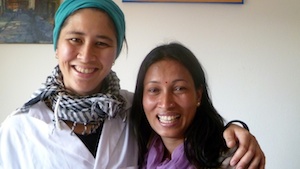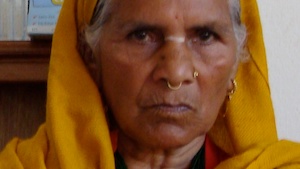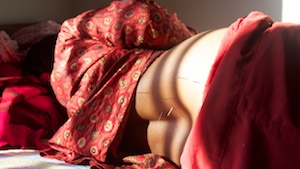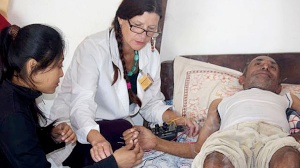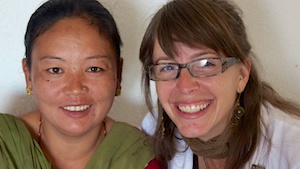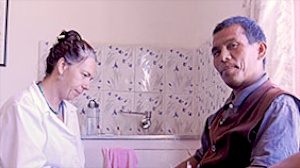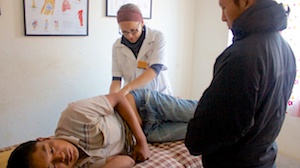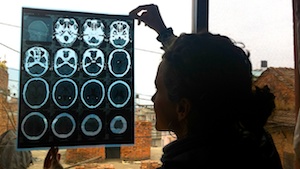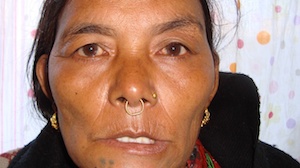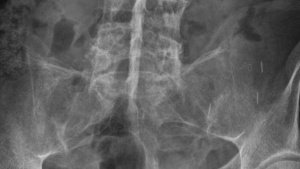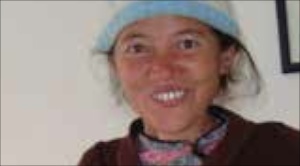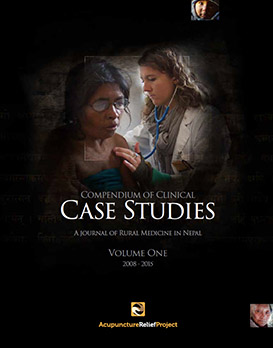Eliot Sitt LAc
December 2014
OVERVIEW
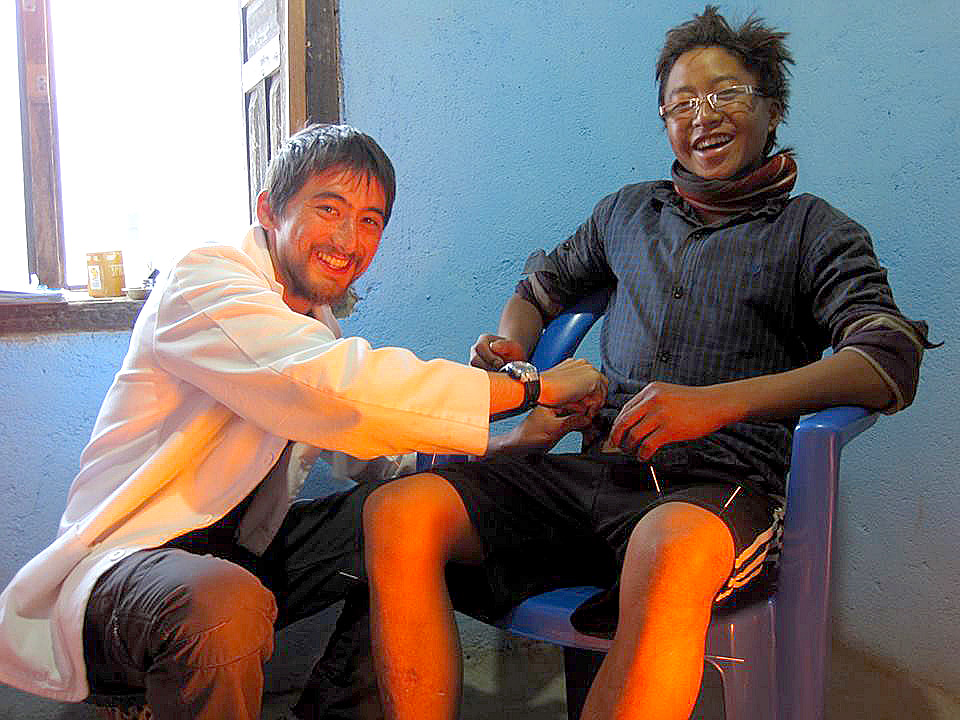
19-year-old male presents with trauma-related chronic hip and low back pain with limits in range-of-motion that interferes with daily life. After 24 acupuncture treatments over the course of 6 weeks, the patient has increased range-of-motion and significant pain reduction.
Subjective
19-year-old male patient presents with complaints of hip and low back pain. He describes the back pain as a dull ache that worsens while bending either forward or backward. He is able to walk fairly comfortably, but it is worse when carrying heavy loads. He experiences occasional tingling down the legs. The back pain began 8 or 9 years ago with a fall from a tree. He landed flat on his back onto a branch on the ground. He lost consciousness for about 5 minutes. After regaining consciousness, he found it too painful to walk. He did not receive treatment at that time. The back pain gets worse while working in a position of forward flexion for extended periods of time.
For the past 5 or 6 years, he has also experienced a gradual onset of hip pain, which prevents him from being able to squat at the toilet or separate his knees enough to straddle a motorcycle. The pain radiates down the anterior and lateral aspects of his thighs. He feels some hip pain while seated in a chair, and resting one ankle on the opposite knee is too painful of a position to maintain. He is also physically unable to place either knee above the other in a seated position. He reports tightness along his anterior thighs, as well as occasional neck and upper back pain along the spine.
Objective
The patient appears in good health and overall good spirits. He is alert with a small build and friendly demeanor. The patient has normal range-of-motion at the waist in flexion, extension, lateral flexion and rotation. The erector spinae are tight with tenderness along the lower borders of the spinous processes of L1 to L5.
Passive hip abduction is restricted to 40 to 45 degrees bilaterally (50 degrees considered normal), with a feeling of intense tightness in the inner thighs. There is tenderness upon palpation at the gluteus medius muscle, particularly on the right, at a point halfway between the greater trochanter and the top of the iliac crest.
The patient is unable to maintain a squatting position for more than a few seconds due to hip pain. The Faber test is positive for pain bilaterally in the initial position of one ankle placed on the opposite knee without downward pressure applied by the practitioner. The pain is felt deep in the hip bilaterally, with additional back pain on the right side near the SI joint. The right leg appears shorter than the left by about an inch, and the right PSIS appears slightly higher. There is tenderness at the SI joints bilaterally.
In the supine position, the right leg appears slightly shorter than the left. Leg length measurements show 29 inches from the prominence of the greater trochanter to the lateral malleolus bilaterally, but 34 and 35 inches from the umbilicus to the medial malleolus on the right side and left side, respectively.
Braggard’s test (aka the reinforcing straight leg raise) is positive bilaterally with tingling appearing at about 70 to 75 degrees and reappearing with passive dorsiflexion at a slightly lower angle. The tingling is felt down the posterior thigh and popliteal fossa. Strong dorsiflexion with the leg fully extended, but not raised, also results in tingling in the popliteal fossa bilaterally.
The Valsalva maneuver results in a tingling sensation in his toes. The piriformis test is negative for tingling sensations, although the position causes discomfort in the hip. DTR’s at the patellar and Achilles tendons are normal bilaterally.
He has a wiry pulse, and pink tongue with a thin white coat.
Assessment
DX: Upon interpretation of the objective testing performed, this patient has multiple structural problems involving the low back and pelvis, including hip joint pathology, sciatica, possible sacroiliac joint subluxation and compensatory muscle tightness of the low back and thighs.
The positive results of the Braggard’s test and Valsalva maneuver suggest sciatica caused by a space-occupying lesion in the lumbar spine. Possibilities include intervertebral disc herniation, osteophytes or spinal stenosis. Disc herniation is the most common of these causes and also consistent with this patient’s history of trauma. The trauma conceivably could have caused a subluxation of a vertebrae in such a way that it could compress a nerve root. However, no obvious misalignments of the spinous processes are observed upon palpation. Spinal stenosis and the presence of osteophytes are less consistent with the history of trauma and is unlikely in this case due to the patient’s young age.
The sciatic symptoms, in this case, may also be caused by muscle tightness in the pelvic area compressing the sciatic nerve. However, the negative result of the piriformis test suggests that the sciatic nerve is not being compressed by the piriformis muscle, which is commonly involved in sciatic compression due to muscle tightness.
An imaging study of the low back such as an MRI or x-ray would be needed to determine the nature and location of any space-occupying lesion and to make a definitive diagnosis. There isn’t severe enough evidence of nerve root compression at L3, L4, L5 or S1 to affect DTR’s, as bilateral patellar and Achilles’ DTR’s respond normally.
Due to the number of years that have passed since the original accident, it is difficult to ascertain the exact nature of the original injury that caused the back pain and radiculopathy. Given that this injury was untreated, it is likely that compensatory muscle tightness, serving to guard the initial injury, has resulted in slow-onset hip pain and subsequent structural imbalance.
TCM DX: Qi and blood stagnation in the Du Mai, Bladder and Gallbladder channels
PROGNOSIS: This patient has responded well, experiencing significant improvement, to previous acupuncture treatment for back pain. He is willing to come in frequently for treatment. The patient is likely to experience pain reduction and increased range-of-motion over the course of treatment. However, because his condition is complex and chronic in nature, he is unlikely to see a full resolution of all of his symptoms.
Plan
Treat with acupuncture and/or electro-stimulation 5 times per week for 2 weeks, before reassessing. Focus primarily on hip pain, which has not received previous, direct treatment, and continue to reduce back pain.
Typical treatment for hip pain: GB40, GB34, ST34, SP10, LI4, TB5, GB28, Ah Shi x2 superior to the greater trochanter, deep insertion towards the joint. Electro-stimulation 100/2 from GB40 and GB34 to the Ah Shi points superior to the greater trochanter bilaterally
Typical treatment focused on back and/or neck pain: SI3, BL62, BL60, BL23, LI4, DU20 and Hua Tuo Jia Ji points at tender vertebral levels (often L2-L5)
Outcome
After 24 treatments within 6 weeks, the patient had only occasional, mild back pain, sometimes brought on by carrying heavy loads. He came for many treatments reporting no back pain at all with the majority of the treatments focused on addressing the pain in his hip.
The patient was able to sit in a chair without pain. He could place one ankle on the opposite knee with only minimal pain, which he still felt deep in the hip. He was able to place one knee on top of another, while seated in an even more crossed position, whereas before treatment this position was impossible. The left knee over right knee position was more comfortable than right over left, but he still felt some deep, hip pain on both sides while seated in this position. The patient could now tolerate downward pressure during the Faber test, with significantly reduced pain in comparison to the initial treatment.
The patient was able to maintain a full squat position without pain with both heels flat on the ground, but it was difficult to maintain his balance if his heels were farther apart. He reported feeling much looser in the thighs and pelvic girdle, with passive abduction showing normal range-of-motion at about 50 degrees.
His apparent leg length on the right from the umbilicus to the medial malleolus measured a half inch shorter than the left side at 34.5 inches instead of a full inch shorter at 34 inches, as was measured in treatment 12. A leveling of the PSIS’s was observed.
Braggard’s test remained positive bilaterally, but the tingling sensation was reduced by about 70%. He no longer felt tingling during the Valsalva maneuver.
Although the patient’s condition was not fully resolved, he experienced an increase in range-of-motion and a significant reduction in pain and overall tingling sensations.
Discussion
This case was challenging because there were multiple structural abnormalities coexisting without a clear diagnosis. It was initially difficult to decipher where to focus treatment. Because the back pain had already been improving from previous acupuncture treatment, the back pain resolved to a manageable level early in the course of treatment, resulting in an overall treatment focus on the hip pain.
The patient found the hip pain difficult to describe, but the functional limitations were clear. While many people in the west find it difficult to squat because of how often we use chairs and seated toilets, the inability to squat is unusual and inconvenient in a rural Nepali environment, particularly because squatting is the normal position during bowel movements. It was also a detriment to this patient’s quality of life that he couldn’t sit normally without discomfort prior to treatment.
Continued treatment of this patient with acupuncture would focus on continuing the pain relief of the hip joint with distal Gallbladder points and deep local needling, as well as a continued loosening of the local musculature of the pelvis, low back and thighs. Additional assessment is needed to determine the cause of the leg length imbalance. The nerve root compression causing sciatica should also be more precisely assessed, ideally with an imaging study.
This case study suggests that acupuncture with electro-stimulation can have a significant therapeutic effect on complex, long-standing musculoskeletal conditions, and has the potential to be a valuable therapy in an environment with limited access to diagnostic imaging and allopathic medical care.












